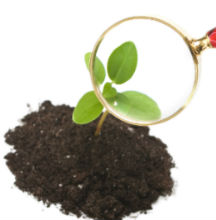With the growing focus on sustainability and slowing the loss of habitat, native plants are moving into the gardening spotlight. Using native plants in our gardens is one of the most significant things we can do to promote a healthy environment.

What are native plants?
Native plants are species that occur in the region in which they evolved. Plants evolve in response to processes characteristic of the region – the climate, soils, timing of rainfall, drought, and frost – and interactions with the other species inhabiting the local community. Thus native plants possess certain traits that make them uniquely adapted to local conditions and often surpass non-natives in ruggedness and resistance to drought, insects and disease.
Virginia has more native plant species than any other state in the US because of its location in a transitional zone (mid-Atlantic) and its three soil types: coastal, piedmont and mountain.
An excellent resource is the US Fish and Wildlife Service publication Native Plants for Wildlife Habitat and Conservation Landscaping. The publication is now available for purchase on Amazon.
Comprehensive lists of Virginia native plants can be obtained from the Virginia Department of Conservation and Recreation (DCR). The Green Spring Gardens website also contains lists of recommended native plants (shade, sun, trees, shrubs, groundcovers and grasses), native plants for wildlife (birds, butterflies and other pollinators) and native plants featuring the native plant garden.
Why grow native plants?
Because native plants are uniquely adapted to thrive under the conditions of the region, they require little or no fertilizer, watering or pesticides. Thus, they require less of your labor, fewer resources – water – and fewer if any potentially harmful chemicals.
Native plants play a critical role in the ecology of an area. According to the National Wildlife Federation, native plants may support 10 to 50 times as many species of wildlife as non-native plants. Vegetation is the single most important factor in attracting birds – the greater the presence of native vegetation, the larger the population of native birds. In fact, the greater the variety of native species included in a landscape, the more likely uncommon or rare species will be attracted to an area. Native plants provide familiar sources of food and shelter for wildlife. As natural habitats are replaced by urban and suburban development, the use of native plants in landscaping can provide essential food and shelter for displaced wildlife.
Once native plants are brought back to a site, native birds, animals and insects follow. Specific bird species eat certain insects and those insects feed on specific plants. So whether or not a specific native plant grows in an area can affect the whole food chain. Consider the monarch butterfly whose survival depends on their being unpalatable to birds because of the toxins they ingest from certain milkweeds. As these particular milkweeds disappear the monarch becomes more vulnerable to predators.
Finally, native plants can match the finest cultivated plants in beauty and interest. There are native plants for every landscaping need. The native flora of Virginia offers a surprising variety of color, form, and texture. In fact, many familiar and popular landscaping plants such as black-eyed Susan, cone flower, columbine, and bee balm are native to Virginia. Equally beautiful are the less known black snakeroot, turtlehead, liatrus and mountain mint. Designing with natives allows you to create distinctive natural landscapes with unique regional character and a critical role in preserving diversity.
Where to Get Native Plants
Native perennials can be found at local garden centers but are often not labeled as natives and existence of hybrids may be confusing. Use the resources below to identify the plants you want by their Latin names. Then take this list with you to the garden centers. Shop around, the availability of natives is growing but can’t be depended upon.
Native plant sales are the most reliable source of true native plants. There are many native plant sales in the Northern Virginia area in the spring and a few in the fall.
Native Plant Resources
- My Backyard Program: Grow Native
- Virginia Native Plant Society
- Bringing Nature Home, Doug Tallamy
- HOA Brief on Natives



